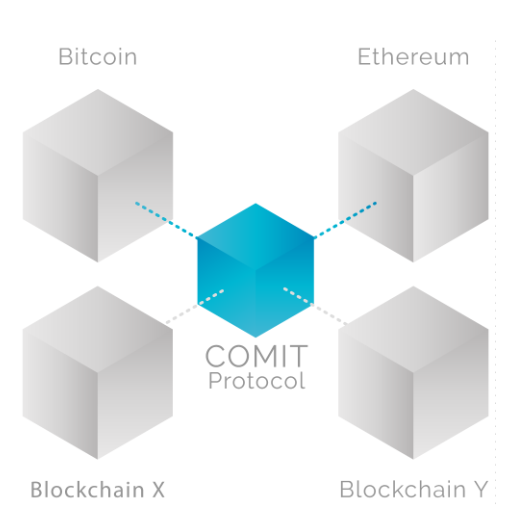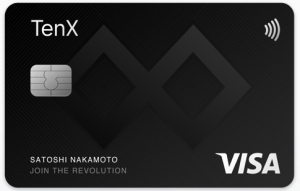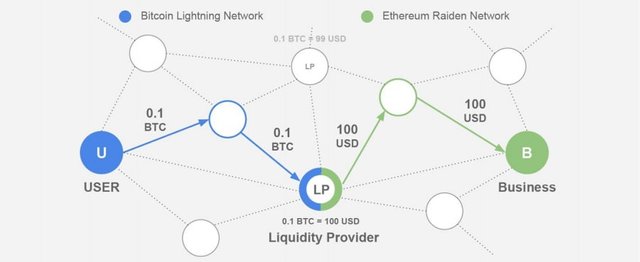Crypto Academy Week 4 Homework Post for Professor @gbenga on "All About the Ethereum Blockchain", answered by @cryptocheta
Hello Steemians! It's another wonderful week of lecture, hope we all are following up because " we learn every day" is very true from what I have seen in this week's Crypto Academy. As usual, I enjoyed the lecture of @gbenga about "All About the Ethereum Blockchain",
Nice work and now it is time for homework.
TenX is a Singapore-based firm that permits customers to use Ether (or other cryptos) to pay for goods at almost any retailer or point-of-sale in the world. This is accomplished by using TenX’s line of cryptocurrency debit and credit cards that link up with its established cryptocurrency wallet (and it supports all of the top cryptos). Lately, the firm partnered with Litecoin to begin an LTC debit card, which will enable customers to use LTC for payment at any point of sale that allows credit cards.
All customer transactions handled by using TenX’s technology are registered on the blockchain and will be a key part of TenX’s forthcoming COMIT Network, an off-chain multi-transaction network that will allow almost any app to communicate across multiple blockchains.
How Does TenX Works And What Is The COMIT Network?
The TenX relies on the COMIT network, and it stands for Cryptographically-secure Off-chain Multi-asset Instant Transactions. In plain words, it is a network for cheap, fast, and frictionless global payments. It’s a separate project from TenX, but some team members are actively committed to its development. All TenX’s services (payment cards, wallet, ATM services, and bank accounts) communicate with COMIT.
The COMIT Network utilizes COMIT Routing Protocol (CRP). It is meant to support blockchain interconnectivity, allowing existing blockchains to connect to the new ones. The whole process is similar to the IP/TCP protocol which underpins the internet. The COMIT network supports changing assets immediately and with minimal fees.
An easy COMIT transaction takes place among two networks. For this transfer to be completed, both of them need to be connected to COMIT. It moves from the sender network to the receiver with the aides of the Liquidity Providers (LP). An LP also serves as a link connecting two parties and provides liquidity for the exchange of assets. Additionally, it checks with multiple providers and picks the one with the best exchange rate.
A completely functioning COMIT version incorporates Payment Channels, Hashed Time Lock Contracts, and Liquidity Providers to produce a single universal decentralized cross-chain asset conversion network. Applying COMIT network for payments, all your cryptocurrency assets remain cryptocurrency until you make a transaction.
Any COMIT agreeable blockchain must have the following features:
Timelocks: A provision to lock funds until a specific date.
Double spend protection: A way to guarantee that out of two valid transactions with a similar output only one is confirmed by the network.
Multisig: A provision of multiple signers. COMIT needs at least two signatures for a transaction to be confirmed by the network.
Hash function: Assist standard hash functions like SHA256.
Finally, TenX will publish required developer tools for merchants, businesses, start-ups, and different stakeholders for frictionless onboarding into the network.
TenX has formed its own mobile payments app which connects to TenX cards. With it, payments can be performed both digitally and physically. At the moment, it supports Bitcoin, Ethereum, and Litecoin wallet to wallet transfers.
TenX additionally makes use of Decentralized Security Smart Contracts (DSS) which permit a user to set rules on spending. For example, you can set a limit on a single purchase, daily expenditures, and withdrawal amounts. Also, you can specify which cryptos you want to use for transactions. For instance, you may require to fund your transaction with 50% Bitcoin and 50% Ethereum or set the card payments to use 34% of your BTC, 33% ETH, and 33% LTC holdings.
In essence, TenX produces the three most needed benefits to the blockchain ecosystem.
- Ease of access: The intended functionality makes it simple to use cryptos for daily needs. Any user without former knowledge about Bitcoin and cryptos can sign up, load their TenX wallet, and use it for purchases.
- Transparent fees: TenX does not charge additional for using the service, as long as users order and pay for the particular services.
- Decentralized security system: The DSS system permits users to have full control of their funds.
What are the Fees TenX will Charge?
TenX is appreciated for its simple fee structure. Their costs boil down to:
· $15 physical card fee which incorporates shipping and tracking.
· $1,5 virtual card fee.
· $10 physical or virtual card yearly fee if you spend less than $1,000 annually.
· 0% international exchange fee.
· A nominal withdrawal fee for transferring assets within different wallets.
· ATM fees.
What is the TENX token?
TENX token is another cryptocurrency asset issued by TENX. It is an ERC-20 token with ERC-1462 functionality. ERC-1462 is a continuation of the ERC-20 standard that complies with securities regulations and legal enforceability. They are not to be recognized security tokens unless your local jurisdiction determines otherwise. Additionally, they won’t represent shares or ownership of TenX. According to the company’s remarks, TENX is a reward token intended to reward loyal PAY holders.
TENX was provided to all the PAY token holders who hold them on December 30th, 2018, at around 10:00 pm SGT (GMT +8), and have a private key of their public address. Users who need to receive the reward tokens had to undergo KYC/AML registration sometime in Q1 2019. 205,218,256 TENX tokens will be issued.
Where can I Store TENX?
Since TENX are tokens created on the Ethereum blockchain, they can be stored in any wallet which supports the ERC-20 standard. Those include hardware wallets like Nano Ledger S and Trezor, or simple yet powerful MyEtherWallet. Note! TenX does present a native mobile wallet that can be downloaded for Android, iOS, or used on the web, but it still does not support ERC-20 tokens. All unsupported coins, tokens, or assets sent to the wallet can be forever lost.
The Current State of the Project
As of December 2018, TenX is unavailable in Afghanistan, China, Cuba, Eritrea, India, Indonesia, Iran, Iraq, Kosovo, Lebanon, Libya, Myanmar, North Korea, Northern Cyprus, Palestine, Somalia, South Sudan, Syria, and Yemen. Those regions are suspended due to stringent compliance requirements.
The company has made remarkable progress and has already launched the service. The first market to gain much-anticipated TenX payment cards is Singapore, followed by many releases in the Asia Pacific region. Next, the company will direct its efforts on expansion to Europe.
For now, the TenX wallet works only with Bitcoin (BTC), Ethereum (ETH), and Litecoin (LTC) cryptos. It is completely secured, provides a private key, 2-factor authentication, and is KYC compliant.
It's a great idea @steemitblog for this educational package or initiative, I have learned so many things since the start of this academy, please keep up the fine lectures.
Written by @cryptocheta
Thanks to you professor @gbenga
cc: @steemcurator01
cc: @steemcurator02
cc: @steemitblog



Thanks for your professional talk.
You are welcome @revjohno for reading the post.